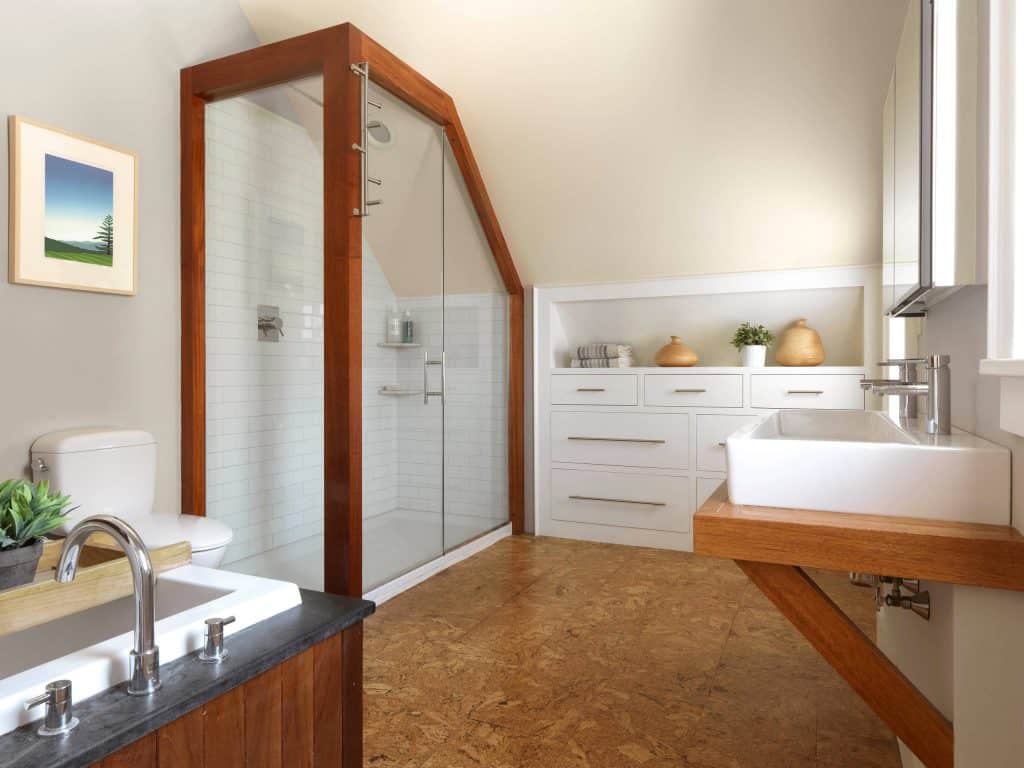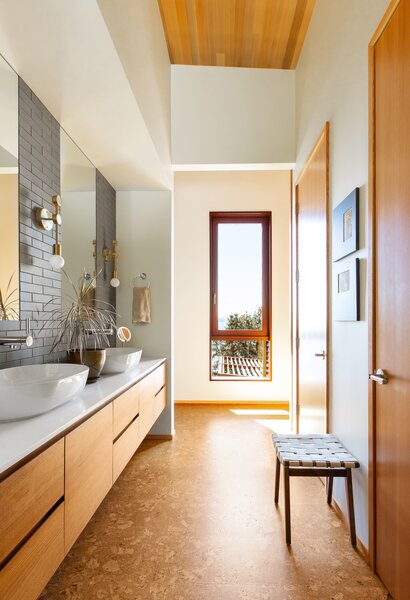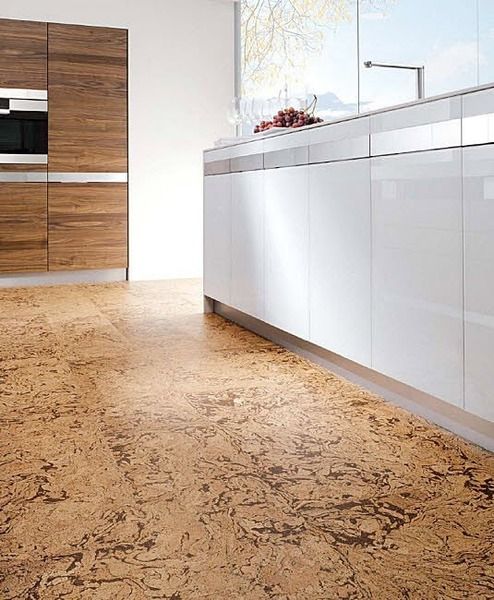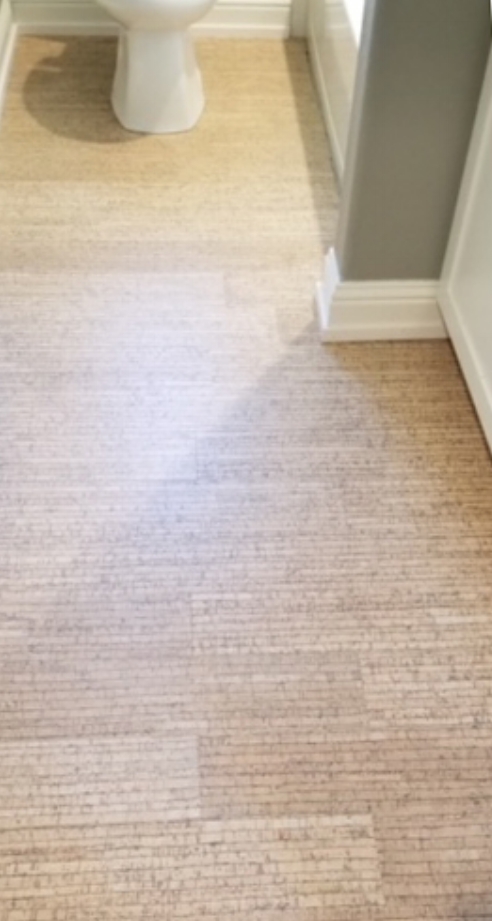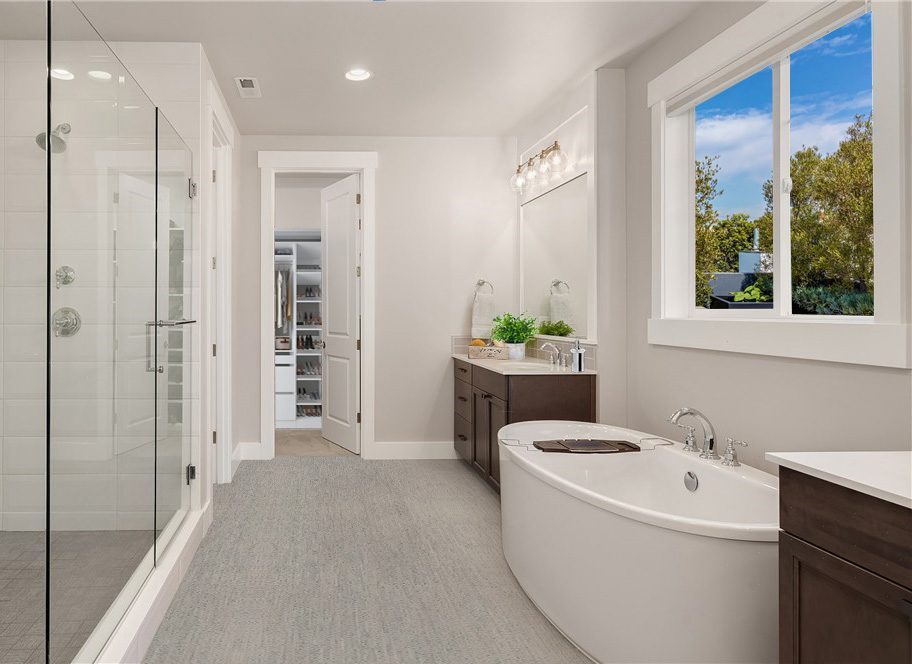Benefits of Bathroom Cork Flooring
Bathroom cork flooring is an innovative and eco-friendly option that combines functionality with aesthetic appeal. Cork is a natural material harvested from the bark of cork oak trees, making it a sustainable choice for environmentally conscious homeowners. Here are some key benefits of using cork flooring in your bathroom:
- Moisture Resistance: Cork is naturally resistant to moisture, making it a suitable option for bathrooms. Its cellular structure contains a substance called suberin, which repels water and prevents mold and mildew growth. This makes cork flooring a practical choice for areas prone to humidity and spills.
- Comfort Underfoot: Cork is soft and resilient, providing a comfortable surface to walk on. Its cushioning effect reduces fatigue and is gentle on joints, making it an excellent choice for bathrooms where you may stand for extended periods, such as while getting ready in the morning.
- Thermal Insulation: Cork has excellent thermal insulation properties, helping to keep your bathroom warm in the winter and cool in the summer. This can contribute to energy savings by reducing the need for heating and cooling. Additionally, cork feels warm to the touch, adding to the comfort of your bathroom.
- Sound Absorption: Cork is a natural sound absorber, reducing noise levels in your bathroom. This is particularly beneficial in homes with multiple occupants, as it can minimize the sound of footsteps and other activities, creating a quieter and more peaceful environment.
- Eco-Friendly Material: Cork is a renewable resource, as the bark of the cork oak tree regenerates after harvesting. Choosing cork flooring for your bathroom is an environmentally responsible decision that supports sustainable practices and reduces your carbon footprint.
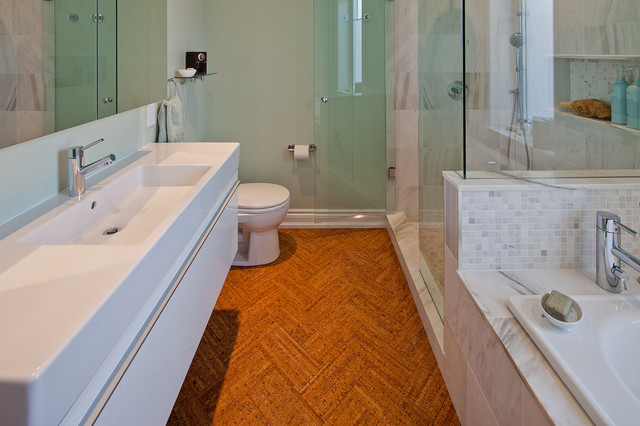
Types of Bathroom Cork Flooring
Cork flooring comes in various types, each offering unique features and benefits. Here are the main types to consider for your bathroom:
- Cork Tiles: Cork tiles are a popular choice for bathroom flooring. They are available in a range of sizes, thicknesses, and finishes, allowing for customization to suit your design preferences. Cork tiles can be glued down or installed as floating floors, depending on the specific product.
- Cork Planks: Cork planks are similar to cork tiles but come in longer, narrower pieces. They are designed to mimic the appearance of traditional hardwood flooring, providing a natural and elegant look. Cork planks are often installed using a click-lock system, making them easy to install.
- Cork Sheets: Cork sheets are large, continuous pieces of cork that can be cut to fit the dimensions of your bathroom. They provide a seamless appearance and are ideal for creating a uniform look. Cork sheets are typically glued down and require professional installation.
- Cork Mosaic Tiles: Cork mosaic tiles are small, individual pieces of cork that can be arranged in various patterns and designs. They offer a unique and decorative option for bathroom flooring, allowing for creative expression and customization.
- Prefinished vs. Unfinished Cork: Prefinished cork flooring comes with a factory-applied finish, which is more durable and consistent than a site-applied finish. Unfinished cork allows for custom staining and finishing on-site, offering more flexibility in achieving the desired look. Prefinished options are generally more convenient for bathroom installations.
Design Considerations for Bathroom Cork Flooring
When selecting cork flooring for your bathroom, it’s important to consider various design elements to ensure it complements your space and meets your functional needs. Here are some key factors to keep in mind:
Color and Finish: Cork flooring is available in a wide range of colors and finishes, from natural earth tones to more vibrant hues. Consider the existing color scheme of your bathroom when choosing the flooring. Lighter colors can make a small bathroom feel more spacious, while darker colors can add warmth and sophistication.
Texture: The texture of the cork flooring can impact both its appearance and functionality. Some cork products feature a smooth finish, while others have a more textured surface. Textured finishes can provide better slip resistance, which is important in a bathroom setting.
Pattern and Design: Cork flooring can be customized with various patterns and designs. Consider incorporating geometric patterns, mosaics, or other decorative elements to create a unique and personalized look. This is particularly useful for adding visual interest to a small bathroom.
Compatibility with Underfloor Heating: If your bathroom has underfloor heating, ensure that the cork flooring is compatible with this system. Not all cork products are suitable for use with underfloor heating, so check the manufacturer’s specifications before making a purchase.
Sealing and Finishing: Proper sealing is essential for cork flooring in a bathroom to enhance its moisture resistance. Choose a high-quality sealant that is specifically designed for cork. Additionally, consider the type of finish (matte, satin, or glossy) that best suits your bathroom’s style and maintenance preferences.
Installation Tips for Bathroom Cork Flooring
Proper installation is crucial for the performance and longevity of bathroom cork flooring. Here are some tips to ensure a successful installation:
Prepare the Subfloor: The subfloor must be clean, dry, and level before installing cork flooring. Any imperfections in the subfloor can affect the stability and appearance of the flooring. Use a leveling compound if necessary to smooth out uneven areas.
Acclimate the Flooring: Allow the cork flooring to acclimate to the room’s temperature and humidity for at least 48 hours before installation. This helps prevent expansion or contraction after installation, which can lead to gaps or buckling.
Use the Right Adhesive: If you’re using glue-down cork tiles or sheets, choose an adhesive that is compatible with cork and suitable for bathroom environments. Follow the manufacturer’s instructions for applying the adhesive to ensure a strong bond.
Install in a Staggered Pattern: When installing cork tiles or planks, use a staggered pattern to create a more stable and uniform surface. This helps to distribute weight evenly and reduces the risk of gaps or seams opening up over time.
Seal the Edges: After installing the cork flooring, seal the edges with a compatible sealant to prevent moisture from seeping in. This is especially important in a bathroom setting, where water exposure is common.
Maintenance and Care for Bathroom Cork Flooring
Regular maintenance is essential to keep your bathroom cork flooring looking its best and functioning properly. Here are some tips for maintaining and caring for your flooring:
Regular Cleaning: Sweep or vacuum the floor regularly to remove dirt and debris that can scratch the surface. Use a damp mop with a mild cleaner for routine cleaning, avoiding harsh chemicals that can damage the cork.
Prompt Spill Cleanup: Clean up spills immediately to prevent staining. While cork is naturally moisture-resistant, it’s still important to address spills quickly to maintain the floor’s appearance. Use a soft cloth to blot spills rather than wiping, which can spread the liquid.
Avoid Abrasive Tools: Use soft cloths, sponges, or microfiber mops for cleaning. Avoid abrasive pads or brushes that can scratch the surface of the cork. Similarly, avoid dragging heavy furniture across the floor to prevent damage.
Reapply Sealant as Needed: Over time, the sealant on the cork flooring may wear off. Reapply the sealant periodically to maintain the floor’s resistance to moisture and wear. Follow the manufacturer’s recommendations for the best results.
Inspect for Damage: Periodically inspect the floor for any signs of damage, such as chips or cracks. Address any issues promptly to prevent them from worsening. Regular maintenance will help keep your cork flooring in excellent condition for years to come.
By understanding the benefits, types, design considerations, installation tips, and maintenance requirements of bathroom cork flooring, you can make an informed decision that enhances both the functionality and style of your bathroom. Whether you’re renovating your bathroom or building a new one, cork flooring is a sustainable, comfortable, and visually appealing option that offers numerous advantages.
Best Natural Floors for Bathrooms
Gray Bamboo – 1/4 Inch (6mm) – Cork Tile Glue Down (Floor And Wall
New Bathroom Designs with Cork Flooring ideas cork flooring
Related Posts:
